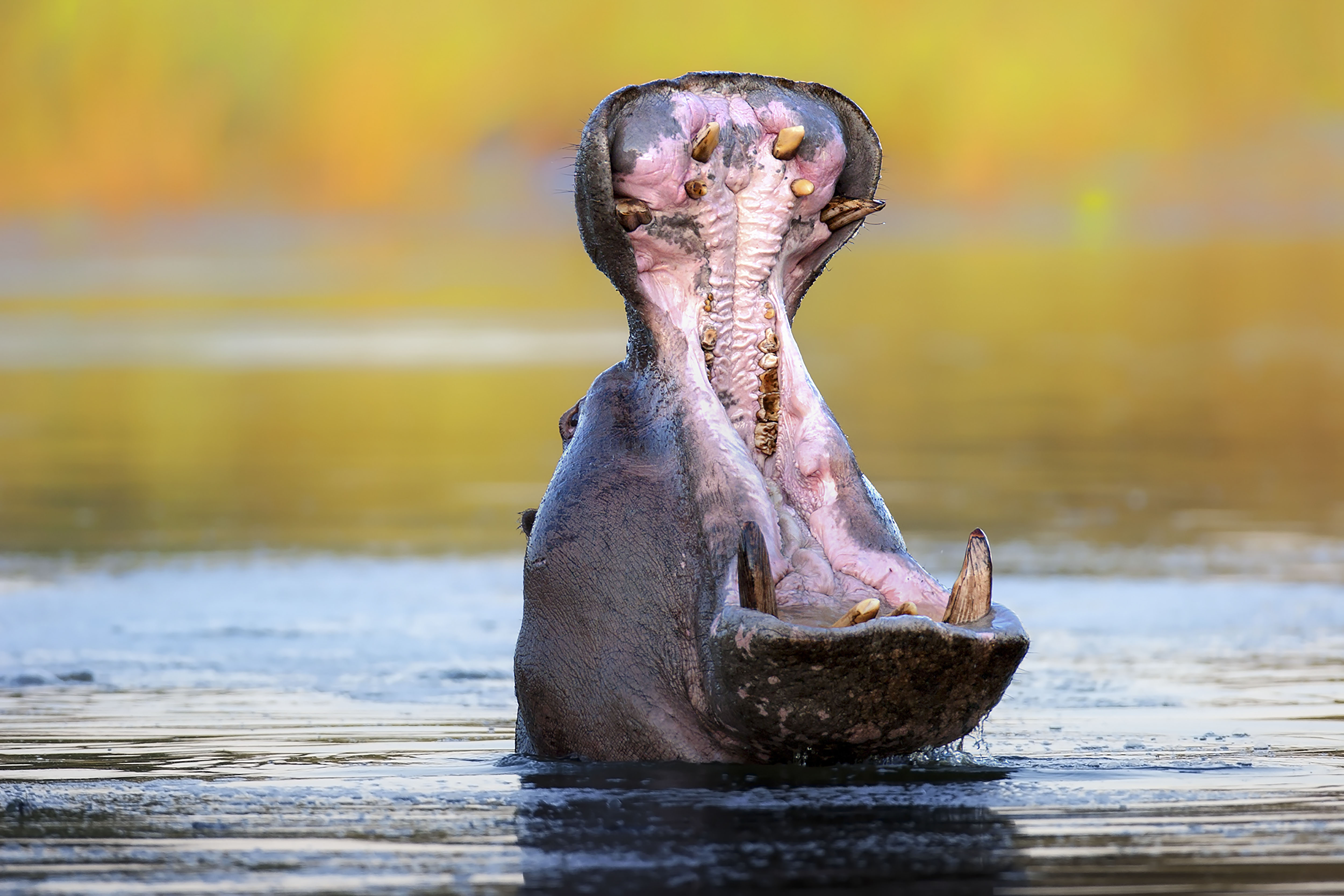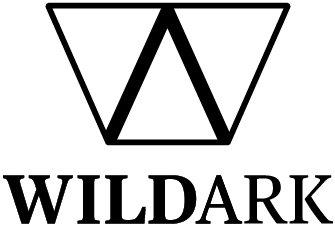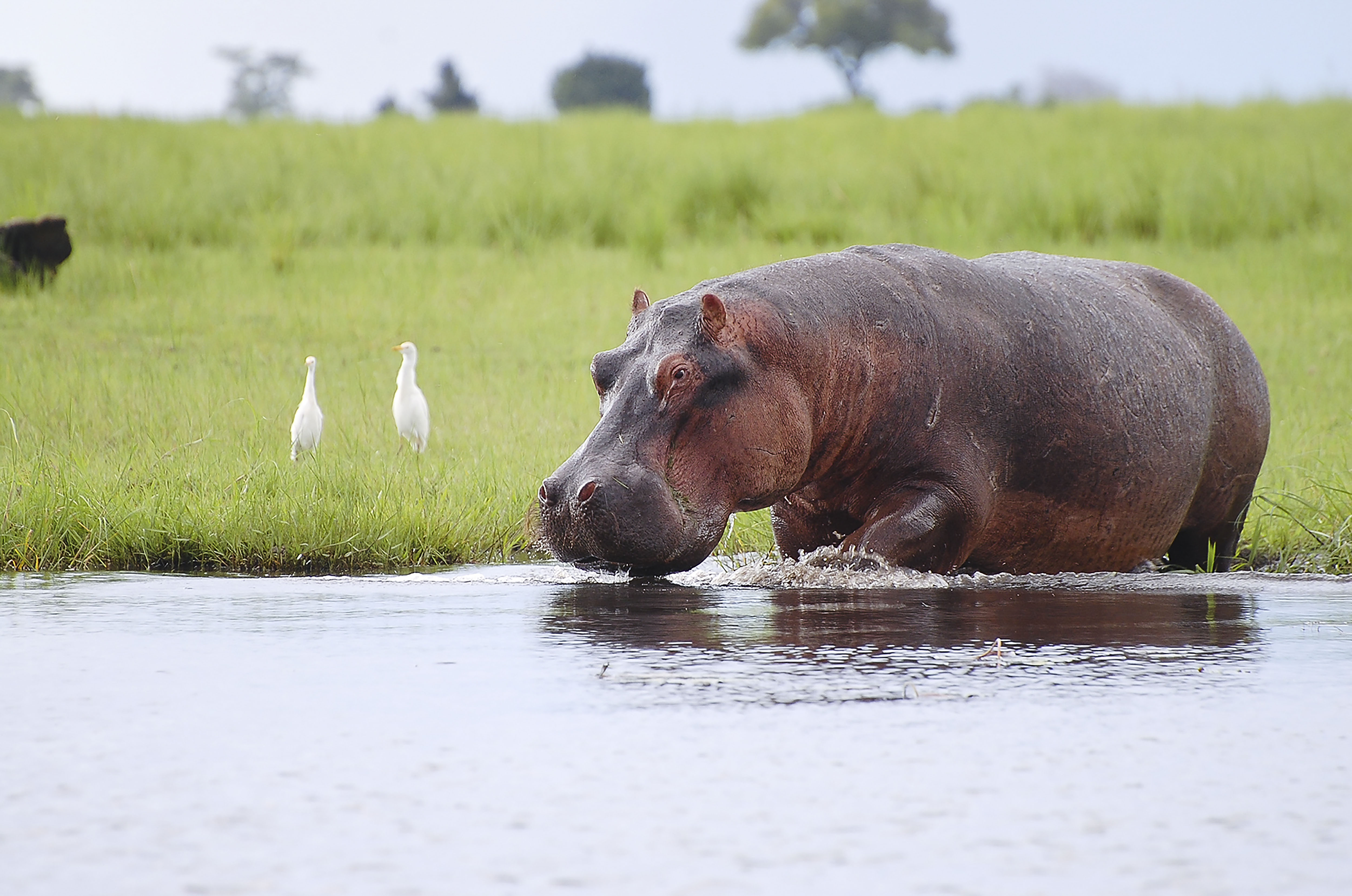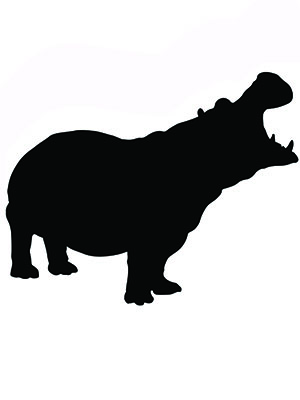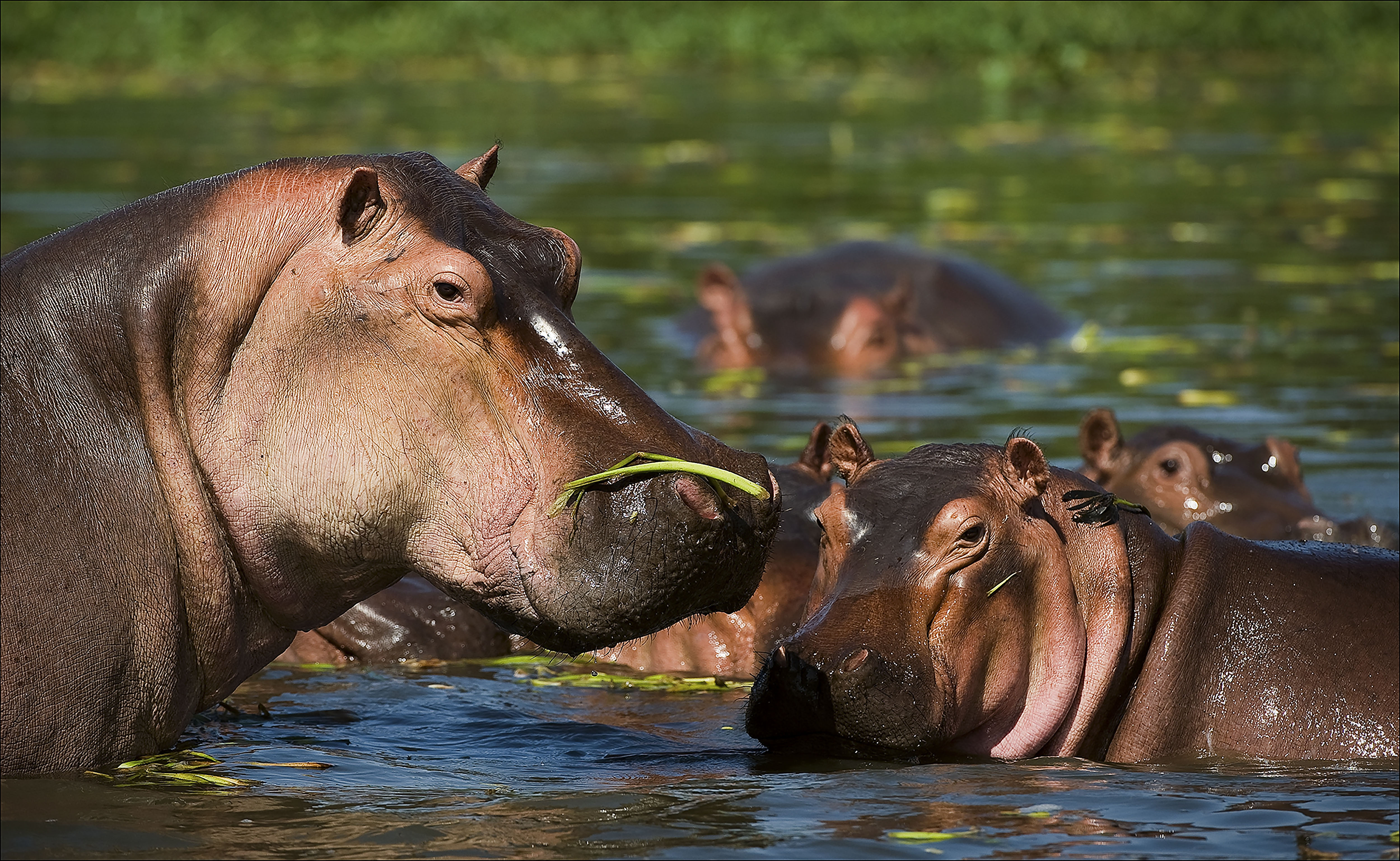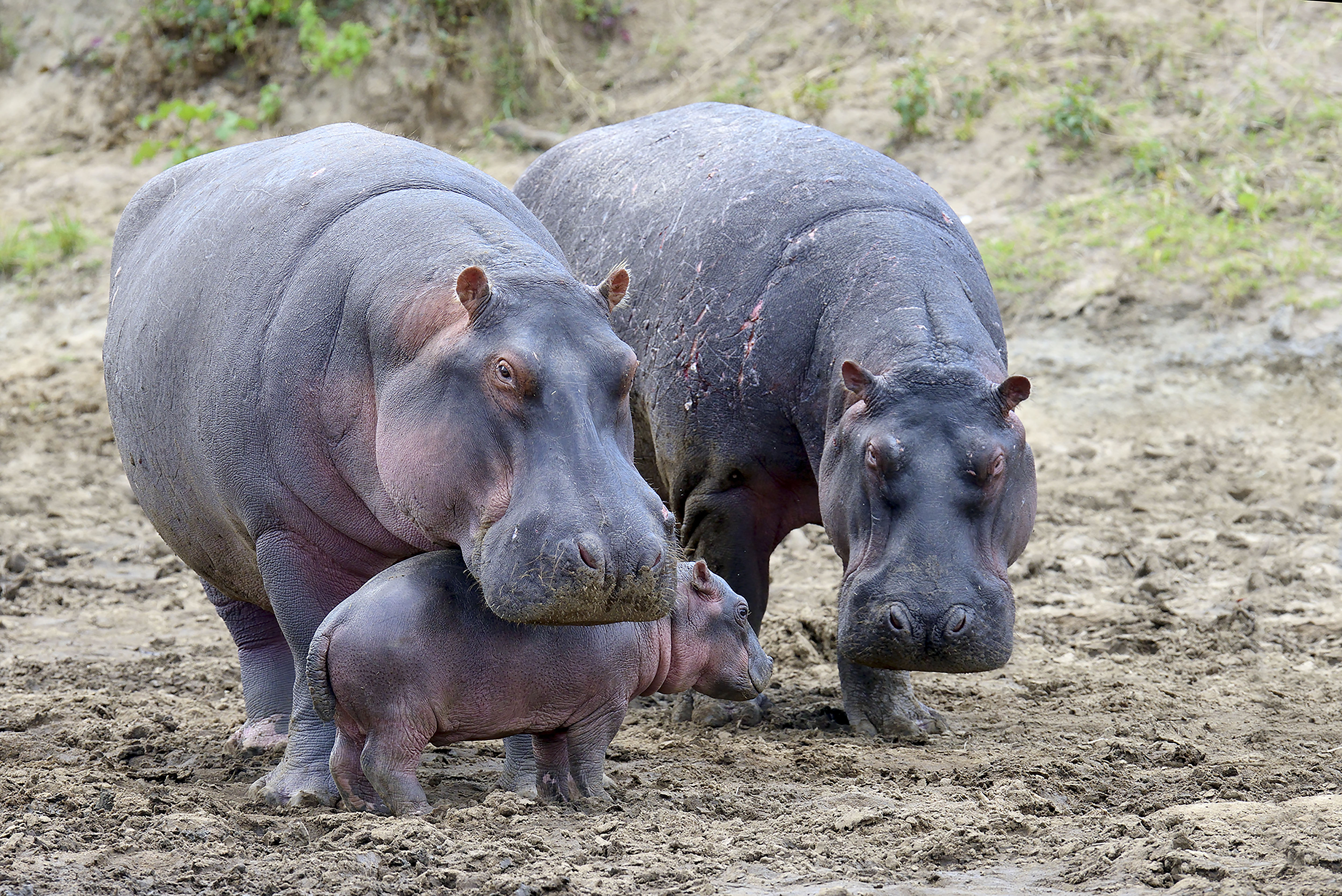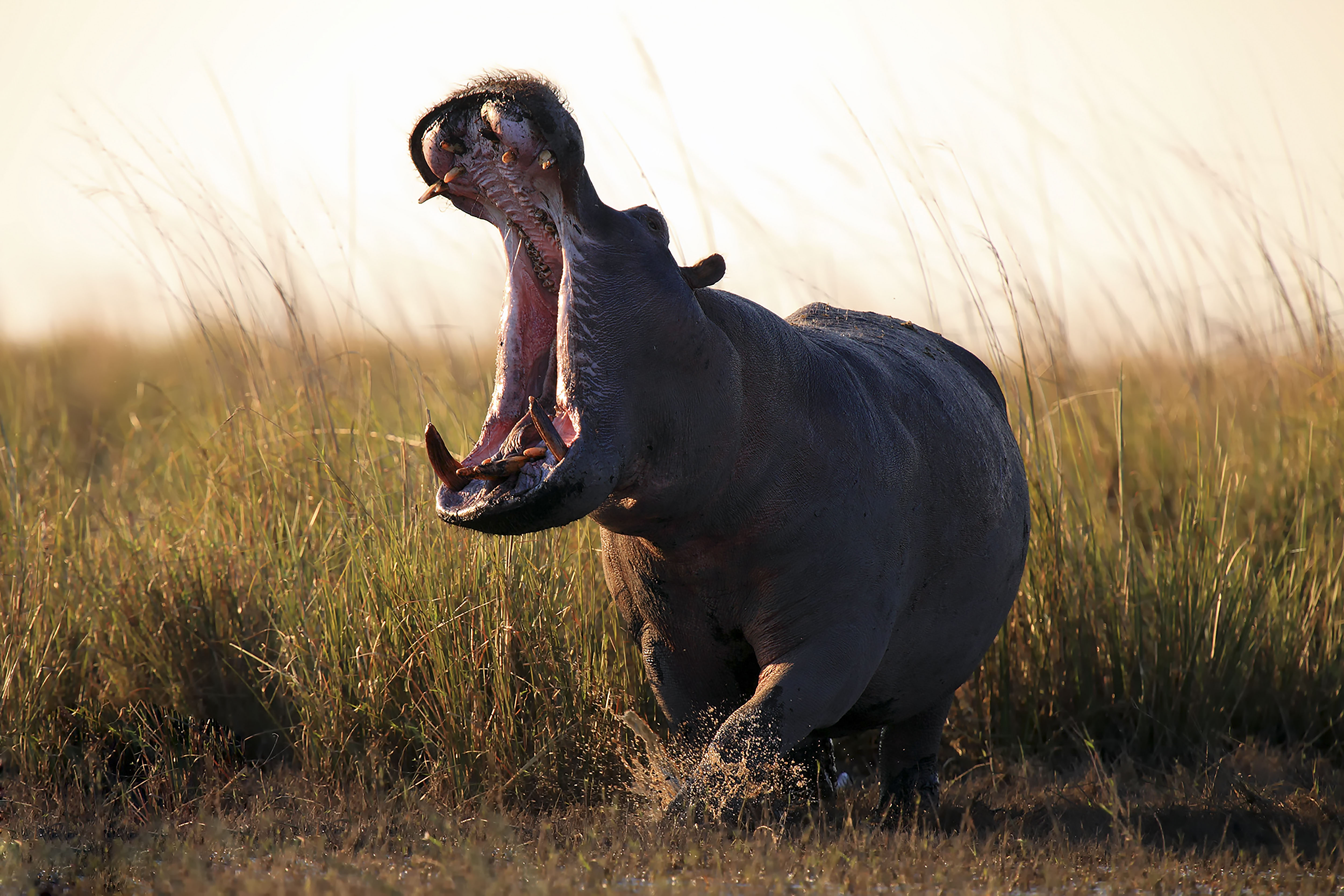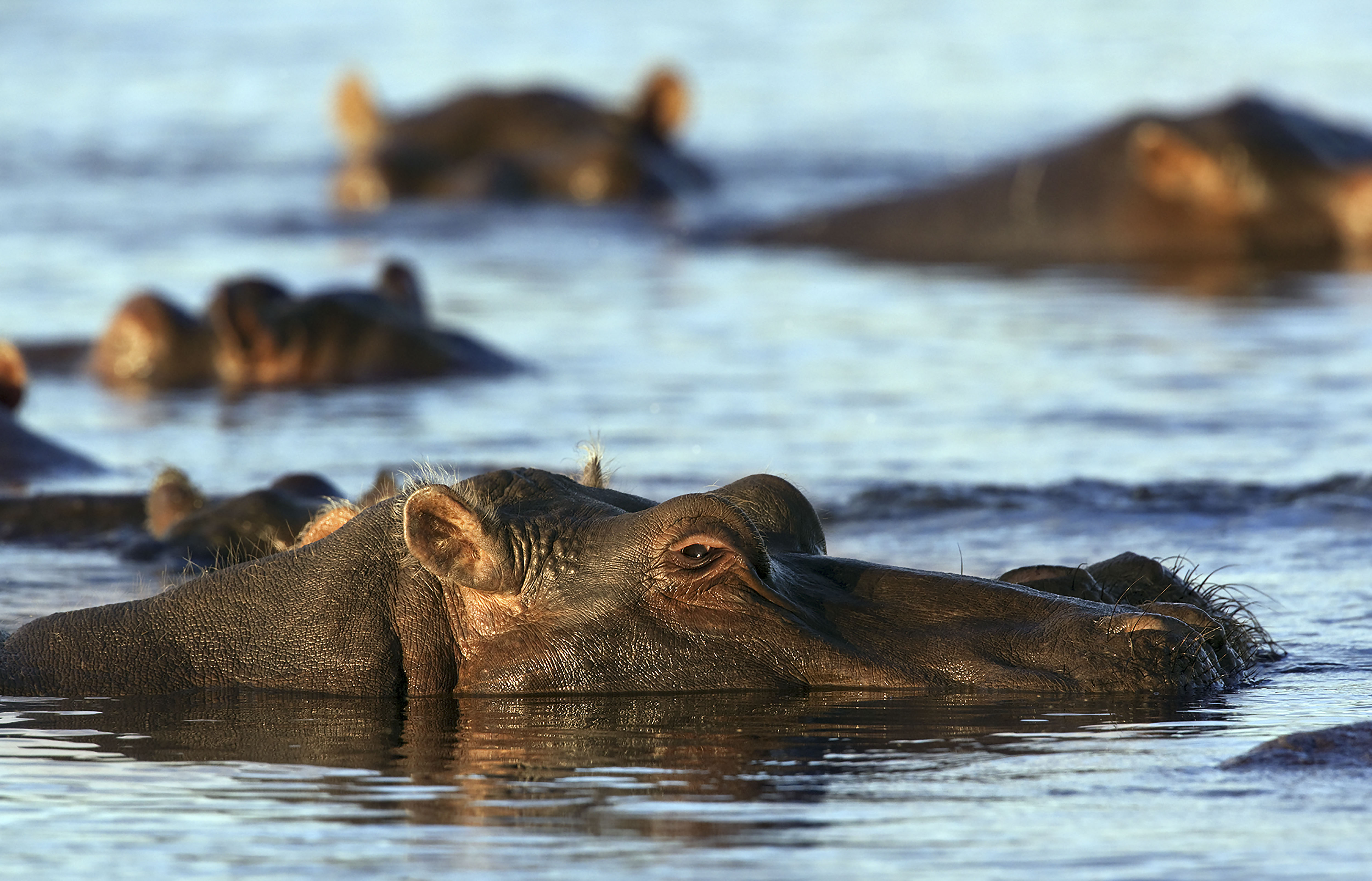Hippopotamus
(Hippopotamus amphibius)

East Africa Acacia Savannahs
STATISTICS
Height up to
165 cm
Length up to
505 cm
Weight up to
3,200 kgs
Lifespan
55 years
Social - Semi-Aquatic - Nocturnal - Territorial
The Hippo is a semi-aquatic species that lives in rivers, lakes, and swamps throughout Africa. Its skin is greyish/purple, extremely thin, and has mucus glands that secrete an acid that acts as a sunscreen protecting its skin from the harsh effects of the sun. The Hippo is well-adapted to life in the water with nostrils and ears that close when it submerges below the surface.
Despite its size, the Hippo moves swiftly on both land, and in the water. On land, it can reach speeds of 30 km/h, and in water, its legs provide powerful propulsion while its webbed feet allow it to navigate the bottom. The Hippo plays an important role in its ecosystem by creating habitat for smaller species. The Hippo creates paths the become flooded during the wet season, leading the way to smaller ponds and side pools that create habitat for small fish.
Life is sedentary for the Hippo who spends most of its day resting. It spends daylight hours in the water, sleeping in closely huddled groups, and emerges at night to feed on grass growing along river banks. The species may graze for up to 5 hours per night, eating large amounts of plant matter, mostly small shoots, grasses, and reeds. The Hippo has enormous teeth, and its mouth can open 150 degrees wide.
In general, this is a social species, that lives in groups of up to 100 individuals. The females are the leaders of the herd while males protect the females. The female Hippo gives birth to on average 1 offspring a year, and gestation is approximately 324 days. Female hippos become extremely protective before they give birth and often isolate themselves from the herd. The Hippo signals its territory by wheezing, honking and dung showering.
BIODIVERSITY BENEFIT
Habitat Creator
THREATS
Habitat Loss
Due to conflict with humans over agricultural development.
Illegal or Unregulated Hunting
Hunting for meat and ivory.
PROTECT THE WILDARK 100
